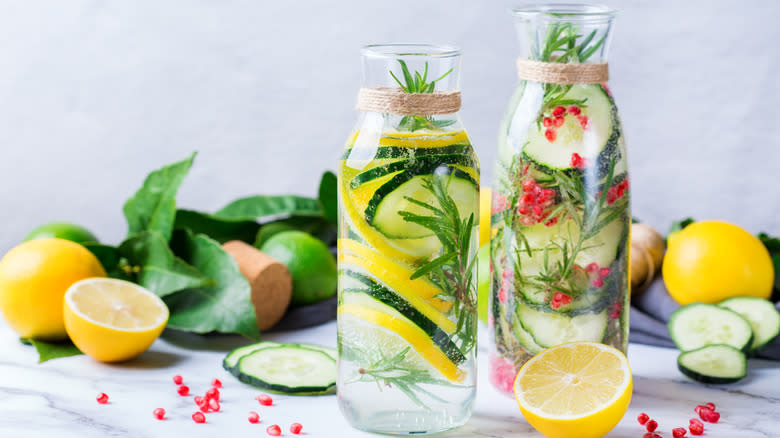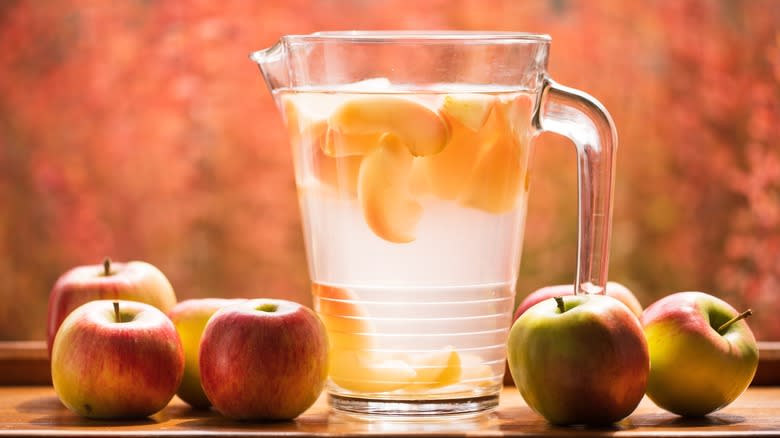When Infusing Water, Thinly Slice Harder Produce To Maximize Flavor

Are you drinking enough water? Like many of us, you could probably stand to increase your water intake. But, if staying hydrated sounds like a chore, there's a way to inspire more frequent sipping. All you need to do is infuse H2O with fresh produce. Adding in brightly colored fruits and vegetables will transform water into a beverage that's equally as fun to drink as it is to admire. To best harness all those refreshing flavors, the way you prep matters, especially for denser produce.
Nearly any fruit or vegetable can be used to infuse water. Yet, given that various types of produce have different textures, they need to be handled accordingly, before being added. For instance, berries, cherries, pomegranate seeds, and even corn kernels can all be left as is, whereas soft produce such as tomato, citrus, kiwi, mango, or melons can be cut into chunks or thick slices. When it comes to sturdier produce, however, a different approach is needed.
For fruits and vegetables that are fairly dense, it's best to slice them very thinly. Making paper-thin cuts allows more surface area to be exposed, letting the produce release more flavor in a lesser amount of time. Fruits like apples, pears, nectarines, and coconuts benefit from being cut in this way, similar to vegetables such as cucumbers, carrots, celery, radishes, sweet bell peppers, jalapeños, and even ginger.
Read more: 13 Simple Tricks To Pick The Best Fresh Fruit Every Time
How To Make The Best Infusion With Hardier Produce

Start by giving fresh produce a thorough wash to remove any dirt or residue. We recommend forgoing any peeling to provide a better visual contrast. While cutting dense produce into ultra thin slices is a must, you can still play with shapes and sizes. For example, use a peeler to create lengthy cucumber ribbons alongside slender coins. Otherwise, for a funkier aesthetic, you could slice celery on an angle, use a zester to craft carrot curls, or cut designs out of pear slices.
Additionally, since infused water is totally customizable, you can add as little or as much produce as you wish. For lightly flavored water, add a few pieces and infuse them just briefly. To amp up complexity, load in the produce, infusing anywhere from a few hours to overnight. Moreover, take creative liberties by mixing and matching ingredients, and adding in flavor enhancers like torn basil leaves, crushed mint, or muddled lemongrass.
Appealing as infused water may be, its beauty and flavor is quick-fading. Generally, it's best enjoyed within a 24-hour window, so long as it's kept cool in the fridge. After that, the water turns muddy, produce becomes waterlogged, and flavors start to take on bitter and unpleasant qualities. There's also the threat of bacterial growth, at which point it's time to discard and start a new batch of infused water!
Read the original article on Tasting Table.


